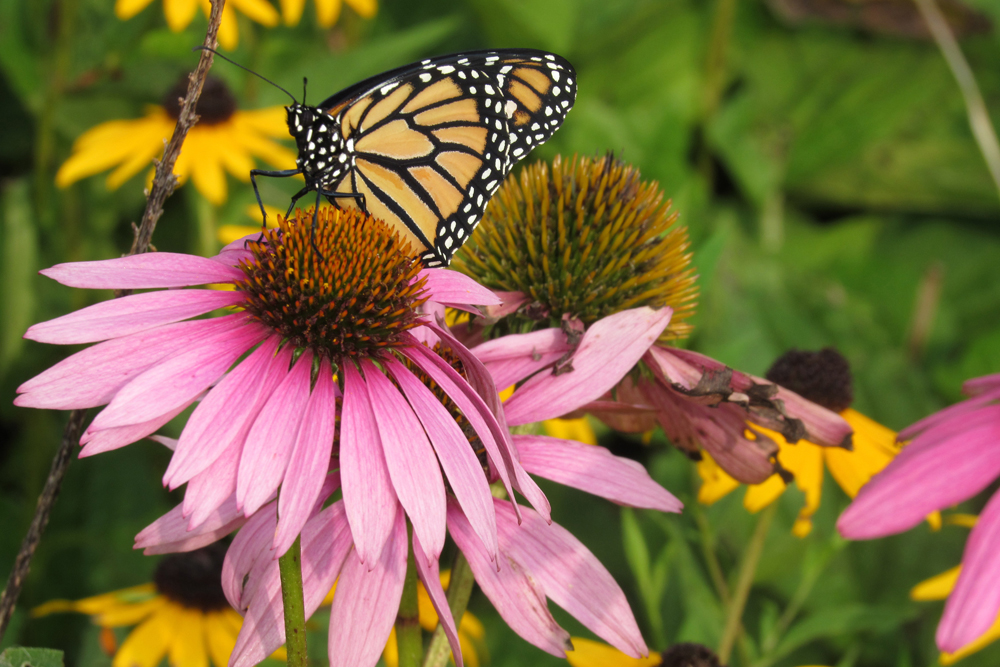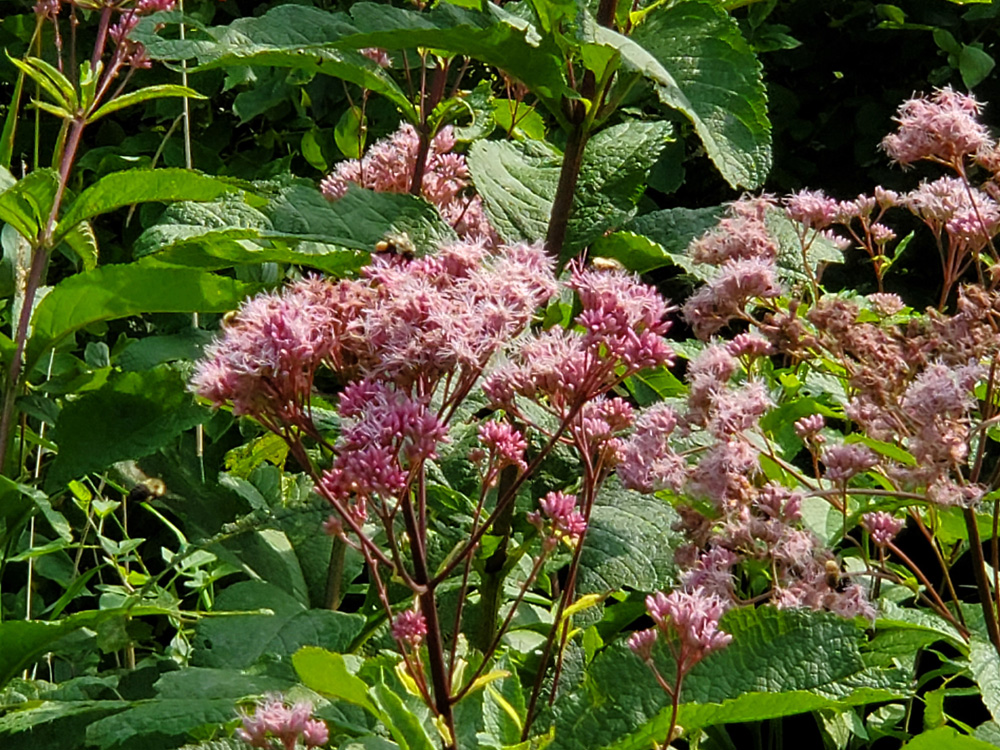Coneflowers are easy and versatile

Is there anything purple coneflowers (Echinacea purpurea) can’t do? They do well even in clay soils. They do well in high humidity and where winters are frigid. They don’t mind summer drought conditions and make great cut flowers. They are a native wildflower that supports pollinators and birds in your landscape. They easily self-sow and provide color throughout mid-to-late summer.
Purple coneflowers are native to a large portion of North America – from the east to the mid-west of the United States, including Connecticut to Florida, and Wisconsin to Colorado and Texas. The plants are prolific bloomers and put on a show with rosy/purple blooms from summer until frost. These mid-sized plants are easily incorporated into gardens of all sizes, and even though they do self-sow, coneflowers are not pushy or aggressive plants.
Following bloom, the orangey seed cones persist through the winter. The strong stems allow seed heads to catch the snow and add winter interest while providing an important food source for winter songbirds.
Coneflowers are great for beginning gardeners as they are not demanding. Started by seed or by transplants, coneflowers are not picky about soil conditions and, once established, will hold up well even under the heat and dry conditions of summer.
Pollinators love the blooms. Purple coneflowers are a butterfly and bumblebee magnet. Monarchs, as well as swallowtail butterflies, are drawn to the open flowers. If you are working to create a pollinator habitat in your landscape, purple coneflowers are a must.
To encourage more flower buds throughout the season, you can remove faded blooms by cutting the stem just above the leafy junction. Later in summer, refrain from dead-heading and allow flowers to mature for birds and for self-seeding.
Few insects or diseases bother coneflowers; however, I do have to fight off Japanese beetles, which can heavily damage the petals. You can tap the beetles off the plants and into soapy water.
Purple coneflowers are used for herbal healing. Both aboveground and root parts are used, either fresh or dried, for teas, juices, and extracts. Herbalists and pharmaceutical companies use the plant’s medicinal qualities to treat and prevent colds, flu, and infections. Studies have also shown echinacea is helpful in treating upper respiratory infections.
Today, there are many new coneflower varieties to try, including double petal, frilly petal, and shorter varieties of the original purple coneflower. Alternative color varieties come in shades of white, green, orange, yellow, and bright red.
Coneflowers work well in the garden with annuals and perennials that are low-growing or fine-textured. This helps bring out the coneflower’s bold impact. Try the Calibrachoa Million Bells series or verbena. Ornamental grasses offer a softening touch, and selections include blue fescue and brown sedge. Really, any perennial goes great with this versatile and fun-to-grow flower. They look stunning with phlox, rudbeckia, daisies, and more. If you are not already growing purple coneflower, they certainly deserve your consideration.





